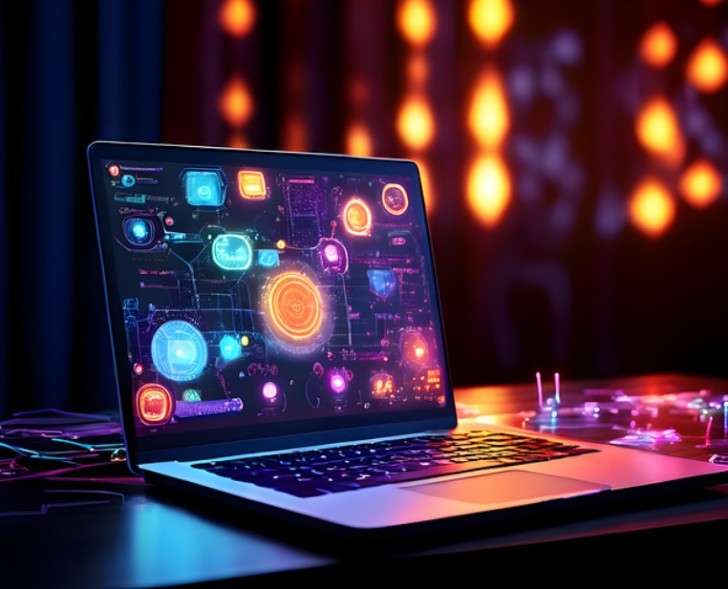Interestingly, tools originally designed for entertainment, like Free Unlimited Video Face Swap, are now finding surprising applications in classrooms, helping students and educators explore creativity, storytelling, and digital literacy in new ways. By using such AI-powered innovations, schools are bridging the gap between traditional teaching and modern engagement.
Personalized Learning Through Intelligent Systems
One of the greatest contributions of AI to education is personalized learning. Traditional classroom models often struggle to address the unique needs of every student. AI systems can now analyze a student’s learning pace, comprehension level, and preferred study style, providing customized lessons and feedback.
For example, adaptive learning platforms use algorithms to track progress and adjust content difficulty accordingly. A student who struggles with a math concept can receive extra practice problems, while a faster learner can move ahead without being held back. This individualized approach helps reduce frustration, boost confidence, and create a more inclusive learning environment.
Transforming Teaching Methods and Classrooms
AI has also changed how teachers prepare, deliver, and assess lessons. Automated grading tools can evaluate multiple-choice questions, essays, and even written reflections with remarkable accuracy, saving teachers countless hours. Virtual tutors and AI chatbots can answer student queries 24/7, allowing continuous learning outside class hours.
Additionally, teachers are leveraging creative AI tools to make lessons more interactive. By integrating visual technologies like face swap, educators can design immersive history lessons, where students can “step into” historical roles, or language classes, where students practice conversations with AI-driven avatars. Such applications enhance engagement and memory retention, transforming abstract subjects into vivid experiences.
Enhancing Student Engagement Through Visual and Emotional Intelligence
In education, engagement is often the key to effective learning. AI’s ability to process images, voices, and emotions enables dynamic learning environments that adapt to student reactions in real time. Systems equipped with emotional recognition can gauge student attention or confusion through facial cues and adjust content delivery accordingly.
Here’s where creativity-focused AI tools like AI Ad generator - AdMaker.ai can also inspire educational innovation. Although primarily designed for marketers, its ability to generate captivating visuals and short-form videos can be adapted for classroom use. Teachers and students can create educational campaigns, visual summaries, or presentation materials effortlessly. By blending AI design tools into education, students not only learn core subjects but also develop essential digital and communication skills relevant to the 21st century.
Bridging Global Learning Gaps
AI technology plays a crucial role in making education accessible globally. Intelligent translation systems and multilingual chatbots help break language barriers, allowing students from different regions to learn in their native tongues. AI-driven platforms can also provide remote tutoring, ensuring quality education reaches even rural or under-resourced communities.
For instance, speech recognition and text-to-speech technologies are enabling visually or hearing-impaired students to access information in ways that were once impossible. These inclusivity-driven innovations embody AI’s broader purpose in education - not replacing teachers, but extending the reach of education to every learner, everywhere.
Data-Driven Insights for Smarter Education Systems
Educational institutions are using AI to analyze large volumes of data to improve learning outcomes. By examining student performance metrics, attendance, and engagement levels, schools can identify at-risk students early and offer timely support. Predictive analytics also helps administrators optimize resources, plan curricula, and improve institutional efficiency.
Moreover, data visualization powered by AI helps educators understand patterns that would otherwise remain hidden. From understanding which teaching strategies are most effective to tracking nationwide academic performance trends, AI provides insights that lead to smarter decision-making and stronger educational policies.
Preparing Students for the AI-Powered Future
The rise of AI in education is not just about smarter systems - it’s also about preparing the next generation to live and work in an AI-driven world. As industries increasingly rely on automation, data analysis, and machine learning, students must acquire both technical and creative skills. Integrating AI into education helps students understand not only how to use these technologies but also how to think critically about them.
Projects involving AI-powered storytelling, content creation, and data analysis encourage problem-solving, teamwork, and innovation. Tools like face swap and AI-based video generators can be part of media literacy programs, where students learn the ethical and technical aspects of digital creation. Understanding the mechanics behind such tools gives them an early advantage in fields like design, computer science, and digital marketing.
The Human Touch in an AI-Driven Education
Despite its vast potential, AI cannot replace the emotional intelligence and mentorship of human educators. The most effective educational systems combine AI’s analytical power with the empathy, creativity, and intuition that only humans provide. Teachers remain the guiding force - AI simply enhances their capabilities.
In this evolving landscape, the collaboration between teachers, students, and intelligent systems promises a future where learning is more engaging, inclusive, and adaptive than ever before. AI’s role in education development continues to expand, not as a replacement for traditional methods but as a catalyst for a smarter, more connected, and creative generation.
 Editorial staff
Editorial staff

 Editorial staff
Editorial staff


